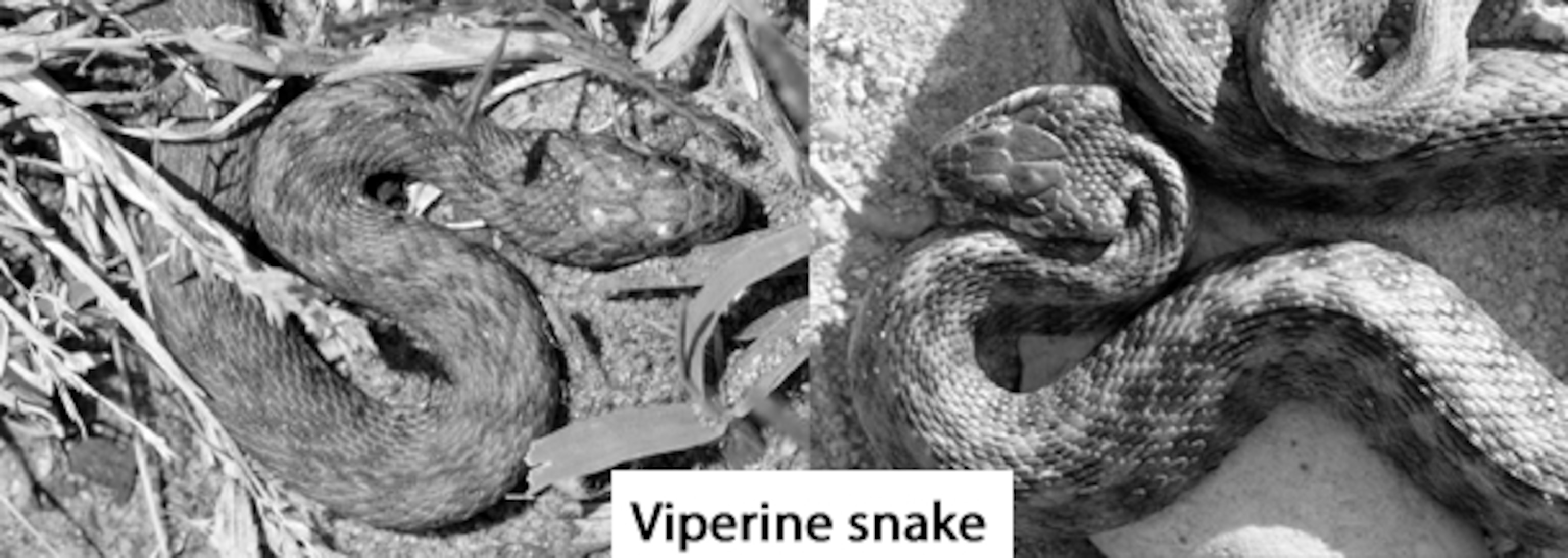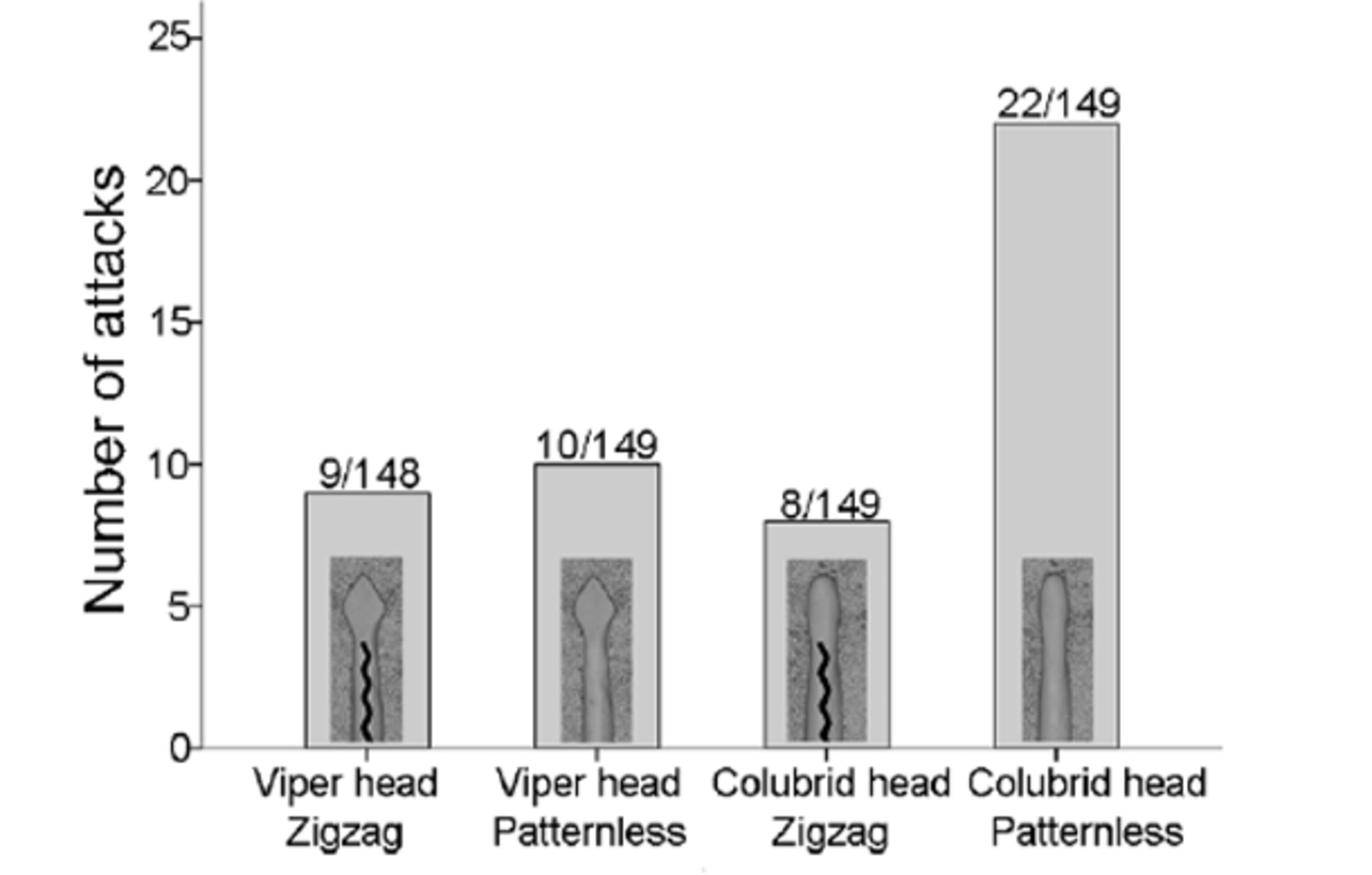
Harmless snakes avoid danger by mimicking the triangular heads of vipers
A bird of prey flies through the skies of Europe and spots a snake on the ground below. Travelling at high speed and soaring at great height, it has mere seconds to decide if it should attack. If the snake is harmless, it could end up with a nice meal. If the snake is venomous, it could get a fatal bite. How can the bird tell the difference? The shape of the head provides a clue.
All of the dangerously venomous snakes in Europe are vipers, like the adder or the horned viper. And all of them have a triangular head. The shape is so distinctive that you can easily recognise these snakes from a distance. And some harmless species like the grass snake, smooth snake and viperine snake use that to their advantage. When threatened, they flatten their narrow heads into a triangle, mimicking the shape of their more dangerous cousins.

Janne Valkonen from the University of Jyvaskyla has shown that the triangular head is enough to ward off predators. He created plasticine snakes (a surprisingly common method in behavioural research) with either triangular or narrow heads. He also painted zigzag patterns on half of them, to imitate the markings commonly found on vipers. Finally, he sprayed all the models with a foul-tasting insect repellent so that predators would never actually eat them.
Valkonen left the fake snakes in Spain’s Coto Donana National Park for a few days and checked them for the distinctive talon marks of birds of prey. He found that the pattern-free models were attacked twice as often if they had narrow heads than if they had triangular viper-like ones. However, if the models had zigzags on their backs, the shape of their head didn’t matter. These results show that birds of prey can recognise dangerous prey by the patterns on their backs and the shape of their heads. Either feature is enough to put off their attacks.

Vipers aren’t limited to Europe and they pack potent doses of venom wherever they are found. It’s possible that snakes around the world have independently evolved to mimic their triangular heads, including North America’s hognose snake and Africa’s egg-eating snakes.
Valkonen even thinks that some caterpillars rely on the same trick. The larvae of many swallowtails and hawkmoths react to danger by hiding their heads and flaring their abdomens into a triangular shape, complete with eye spots and jerky “striking” movements. Where there was once a tasty grub, there is suddenly the head of a viper sticking out of some foliage. Valkonen now wants to “discover if head-shape mimicry can be found elsewhere in the animal kingdom”.
Reference: Valkonen, J., Nokelainen, O., & Mappes, J. (2011). Antipredatory Function of Head Shape for Vipers and Their Mimics PLoS ONE, 6 (7) DOI: 10.1371/journal.pone.0022272
Images from Buto and Valkonen
PS: Grass snakes and smooth snakes are not the only animals to transform their bodies to match the shapes of venomous snakes. The most striking example of such a “dynamic mimic” is the aptly named mimic octopus. This creature, found in Indo-Pacific waters, can take on the shape of a seasnake by shoving six of its eight arms into a burrow, and holding the remaining two in opposite directions. It even changes its colour to imitate the snake’s black and white bands.
